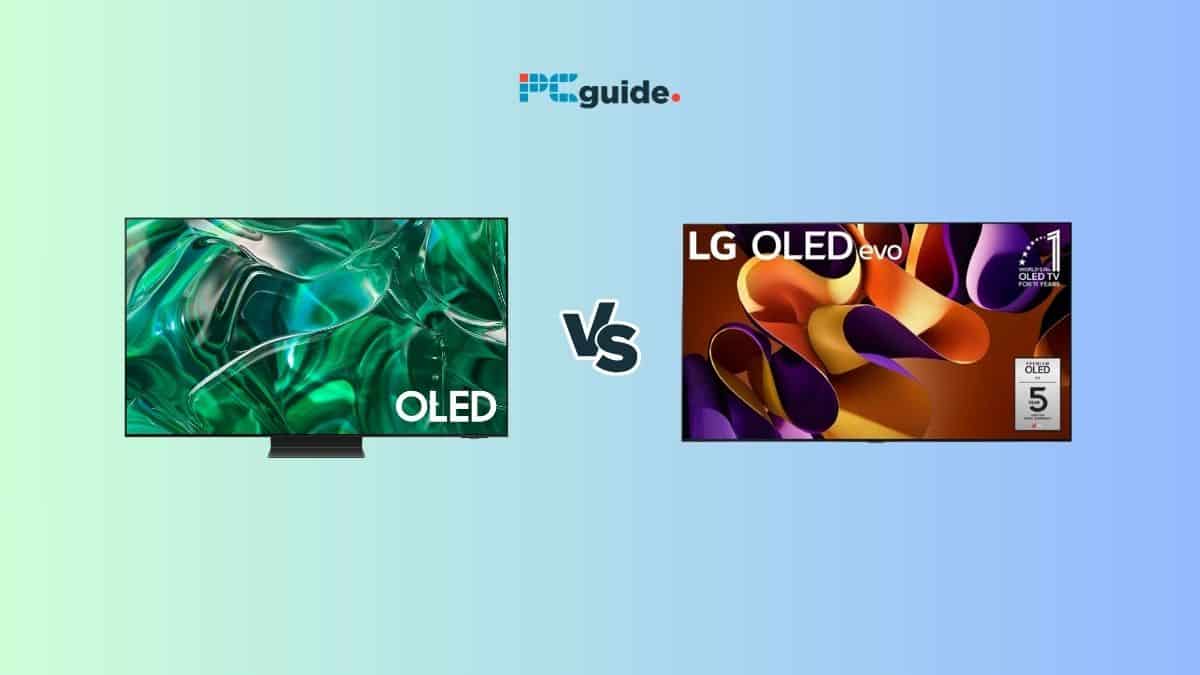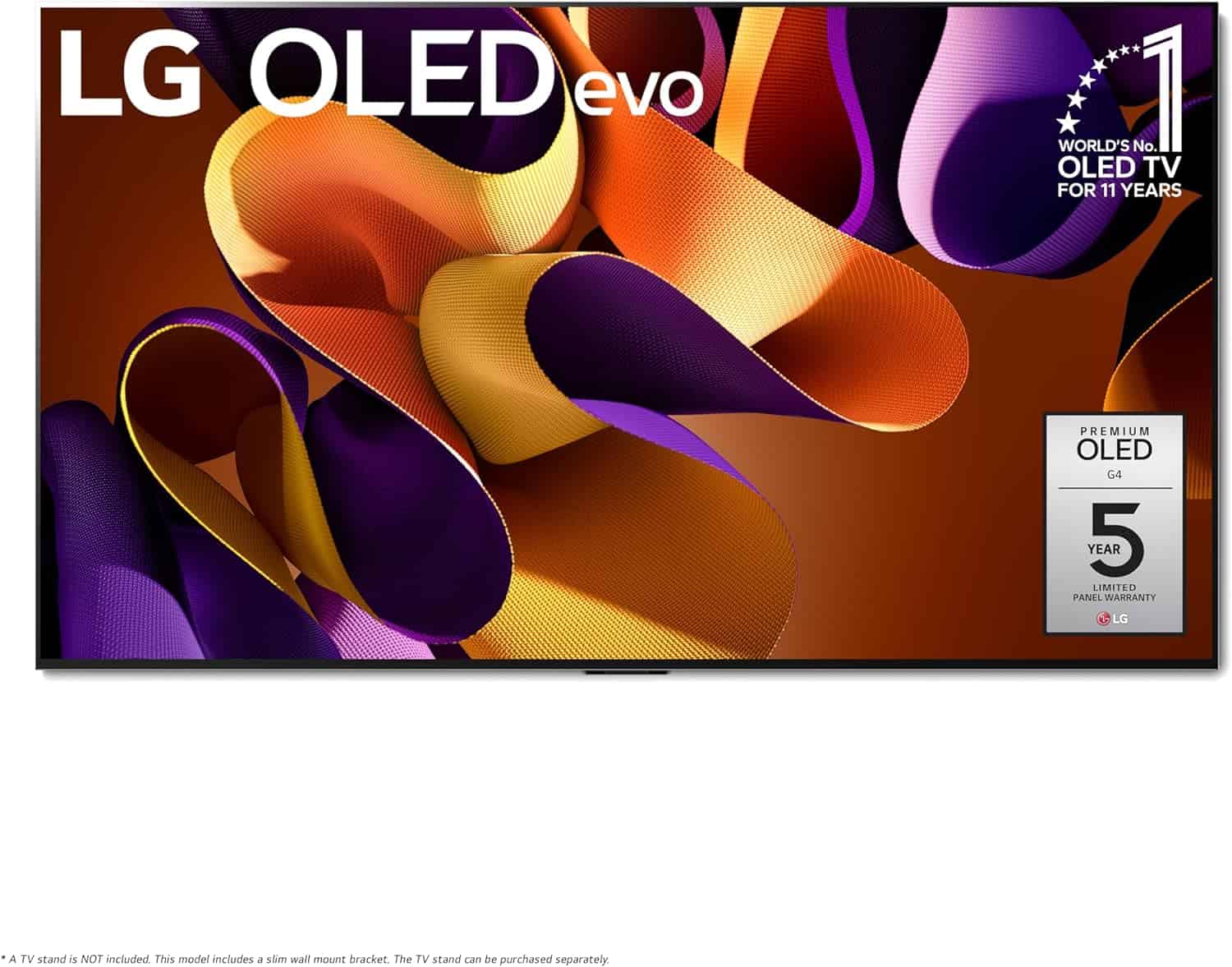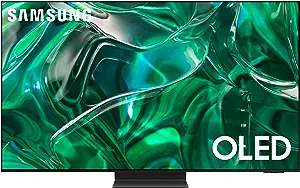Samsung S95D OLED vs LG G4 OLED – Which will be for you?

In the ever-evolving landscape of television technology, the competition between major players like Samsung and LG has reached a new zenith. Both companies have announced their upcoming flagship OLED TV models: the Samsung S95D and the LG G4. Who wins the battleground? Let's compare the Samsung S95D vs. LG G4 to find the answer.
Samsung S95D vs. LG G4: Specs comparison
The Samsung S95D boasts Quantum Dot OLED (3rd Generation) technology, whereas the LG G4 features MLA OLED. Both manufacturers have invested heavily in OLED technology to deliver unparalleled picture quality with deep blacks and vibrant colors. While Samsung incorporates Quantum Dots for enhanced color accuracy and brightness, LG relies on a different OLED configuration, promising exceptional visuals.
Prime Day is finally here! Find all the biggest tech and PC deals below.
- Sapphire 11348-03-20G Pulse AMD Radeon™ RX 9070 XT Was $779 Now $739
- AMD Ryzen 7 7800X3D 8-Core, 16-Thread Desktop Processor Was $449 Now $341
- ASUS RTX™ 5060 OC Edition Graphics Card Was $379 Now $339
- LG 77-Inch Class OLED evo AI 4K C5 Series Smart TV Was $3,696 Now $2,796
- Intel® Core™ i7-14700K New Gaming Desktop Was $320.99 Now $274
- Lexar 2TB NM1090 w/HeatSink SSD PCIe Gen5x4 NVMe M.2 Was $281.97 Now $214.98
- Apple Watch Series 10 GPS + Cellular 42mm case Smartwatch Was $499.99 Now $379.99
- ASUS ROG Strix G16 (2025) 16" FHD, RTX 5060 gaming laptop Was $1,499.99 Now $1,274.99
- Apple iPad mini (A17 Pro): Apple Intelligence Was $499.99 Now $379.99
*Prices and savings subject to change. Click through to get the current prices.
| Specification | Samsung S95D | LG G4 |
|---|---|---|
| Panel Technology | 3rd-gen QD-OLED | MLA OLED |
| Screen Size | Expected: 55″, 65″, potentially more | Expected: 55″, 65″, potentially more |
| Resolution | 4K (3840 × 2160) | 4K (3840 × 2160) |
| Refresh Rate | 120Hz (up to 144Hz) | 120Hz (up to 144Hz) |
| Peak Brightness | Estimated 3000 nits | Estimated 3000 nits |
| HDR Formats | Dolby Vision, HDR10+, potentially more | Dolby Vision, HDR10+, potentially more |
| HDMI Ports | Likely HDMI 2.1 | Likely HDMI 2.1 |
Panel technology: QD-OLED vs. MLA OLED
- Samsung S95D: Employs third-generation Quantum Dot OLED (QD-OLED) technology, known for enhanced brightness and color vibrancy.
- LG G4: Leverages MLA (Micro Lens Array) OLED technology, promising improved efficiency and brightness compared to previous LG models.
Resolution & refresh rate
- 4K Resolution: Both TVs offer 4K resolution for crystal-clear images, a must-have in the era of high-definition content.
- 120Hz (up to 144Hz): Ensures super-smooth motion, crucial for gaming and fast-paced action scenes.
Brightness & glare resistance
- Brightness: While official figures are still pending from LG, both TVs are rumored to reach up to 3000 nits of peak brightness. This delivers a stunning HDR experience and great visibility even in bright rooms.
- Samsung’s Advantage: The S95D features a specific glare-free OLED technology for reducing reflections, a potential boon in bright viewing environments. We are still waiting for more information on how the LG G4 counteracts glare.
Sizes & features for everyone
- Size Options: Expect both the Samsung S95D and LG G4 to be offered in popular sizes like 55-inch and 65-inch, appealing to different budgets and room sizes.
- Gamer-Friendly: High refresh rates, HDMI 2.1 ports, and dedicated game modes (like LG’s Game Bar) make these TVs ideal for PC gamers and console enthusiasts.
Smart features and processors
- Samsung: Exact details are still under wraps, but expect a new processor and potentially an updated version of Tizen OS.
- LG G4: LG’s highly regarded webOS smart platform returns, along with the powerful Alpha 11 AI processor, ensuring a smooth, intuitive user experience.
| Feature | Samsung S95D | LG G4 |
|---|---|---|
| Operating System | Latest Samsung OS | LG webOS |
| Home Screen & Navigation | Samsung’s UI | LG’s UI with “Quick Cards” for content suggestions |
| Social Media Apps | Likely supports Instagram, Facebook, Twitter, etc. | Likely supports Instagram, Facebook, Twitter, etc. |
Additional considerations
- HDR Formats: Both TVs will likely support Dolby Vision for premium HDR content.
- Wall Mount: Slim designs make them perfect for wall mounting.
- Release Date: Rumors suggest both TVs could launch sometime in 2025, potentially with staggered releases across different regions throughout the year.
Samsung S95D vs. LG G4: Performance
Get ready for a truly dazzling viewing experience! Claims of 2000–3000 nits peak brightness on these TVs mark a huge leap for OLED technology. This shift, dubbed “meta technology 2.0,” translates to roughly 42% brighter images than what conventional OLEDs traditionally offer.
How will this impact you?
- Enhanced HDR: Expect high dynamic range content to truly pop, with details shining through in even the brightest scenes.
- Vivid Colors: The wider color range that high brightness enables will make colors appear more vibrant and lifelike.
- Better Visibility: Bright rooms won’t wash out images as easily, improving the overall viewing experience.
| Feature | Samsung S95D | LG G4 |
|---|---|---|
| Panel Technology | 3rd-gen Quantum Dot OLED (QD-OLED) | Micro Lens Array OLED (MLA) |
| Peak Brightness | Up to 3000 nits (estimated) | Up to 3000 nits (estimated) |
| Refresh Rate | 120Hz (up to 144Hz) | 120Hz (up to 144Hz) |
| HDR Formats | Dolby Vision, HDR10+, potentially HLG | Dolby Vision, HDR10+, potentially HLG |
| Anti-Reflection Coating | Specific glare-reduction technology | LG’s typical coatings, MLA, may enhance glare resistance |
| Smart Platform | Samsung OS (latest version) | LG webOS (latest version) |
The LG C4 factor
Interestingly, LG’s mainstream C4 OLED won’t adopt MLA technology this year. However, they promise it will still be significantly brighter than the C3. This keeps LG competitive and suggests they have alternative ways to boost brightness.
Real-world testing
Naturally, claims of 3,000-nits peak brightness need to be verified by reviewers. Anticipation is high, especially for unbiased side-by-side comparisons.
Beyond brightness
- Smart Features: Expect the latest iterations of Samsung’s OS and LG’s webOS on these models, with smooth navigation and app support via their respective home screens.
- Gaming: HDMI 2.1, VRR (Variable Refresh Rate), ALLM (Auto Low Latency Mode), and dedicated gaming modes make these TVs a gamer’s dream.
- Design: Think slim profiles, ideal for wall mounting. Larger models will likely be available for those wanting a statement piece.
Amid this technological arms race, LG’s decision not to incorporate MLA technology in the LG C4 raises eyebrows. However, the company reassures consumers that the C4 will boast even greater brightness than its predecessor, rivaling the performance of last year’s G3 model. This move underscores LG’s commitment to innovation and its determination to stay ahead in the fiercely competitive OLED TV market.
Samsung S95D vs. LG G4: Price and value
Unfortunately, neither Samsung nor LG have released official pricing for their upcoming S95D and G4 OLED models. We’ll have to wait for launch events or closer to release for concrete numbers.
Factors affecting price
Here’s what we can expect to influence the pricing of these TVs:
- Manufacturing Costs: LG Display supplies OLED panels for both its own TVs and competitors, but cutting-edge technologies like QD-OLED and MLA can drive up production costs.
- Premium Positioning: As flagship models, both the S95D and G4 are likely to command high prices, reflecting their top-of-the-line features.
- Market Competition: Pricing strategies often consider where competitors’ similar TVs land in the market.
- Release Timing: Products released earlier in the year (January at CES, for example) sometimes have a higher initial price that gradually decreases over time.
Looking back for clues
To get a very rough ballpark idea, we can analyze the pricing of the previous generation models (i.e., LG G3 and Samsung S95C). Keep in mind that new technology and market fluctuations can significantly change pricing between generations.
Value question
The true “value” of these TVs extend beyond the price tag:
- Performance: Are the brightness gains and picture quality worth the premium?
- Features: Do smart features, gaming enhancements, or unique design elements justify the cost for you?
- Longevity: How long will these TVs stay cutting-edge before a new version makes them seem outdated?
Final verdict
Without the complete specifications, there is no clear winner in the Samsung S95D vs. LG OLED G4 competition. However, with its anti-glare feature, Samsung's S95D seems to have an edge until now. As the competition intensifies, one thing is certain: the future of television has never looked brighter. Stay tuned on PCGuide.com as we keep updating you about the release of OLED TVs, specifications, pricing, and availability.
Will the Samsung S95D or LG G4 have a more “colorful picture,” and which is better for bright rooms?
Both TVs promise exceptional color vibrancy (thanks to OLED technology) and high peak brightness (ideal for brightly lit spaces). QD-OLED panels (Samsung) are known for slightly boosted color saturation, while LG’s MLA technology focuses on increased brightness. The best choice may come down to individual preference for a slightly warmer vs. a more neutral color presentation.
I’m a serious gamer. Which TV is the better choice, the Samsung S95D or LG G4?
Both TVs are powerhouses for gaming. Features to look for include:
- High refresh rate (120Hz+) for smooth motion
- HDMI 2.1 ports for new consoles
- Low input lag and dedicated game modes
- Specific gaming features offered by each brand (LG Game Bar, Samsung Gaming Hub, etc.) Review comparisons once the TVs are released for more detailed analysis on gaming performance.


